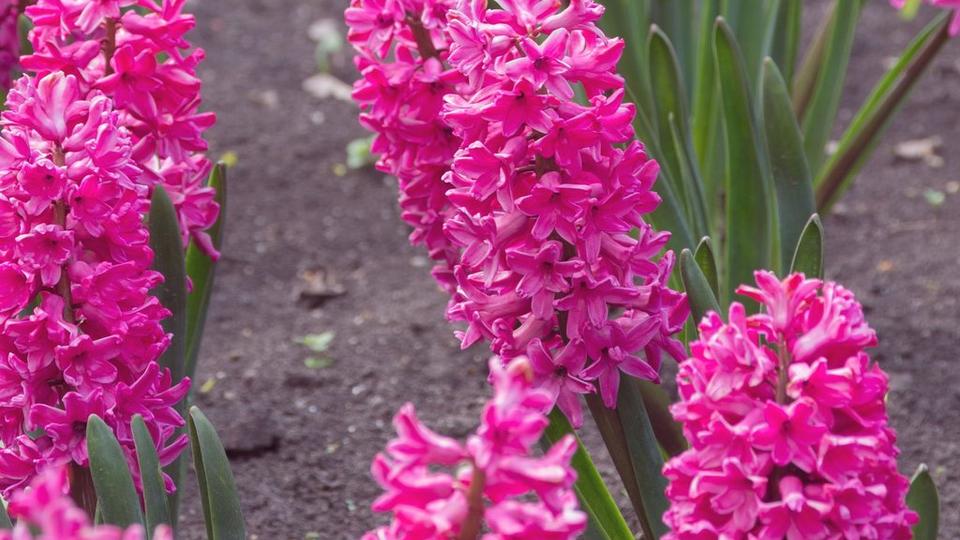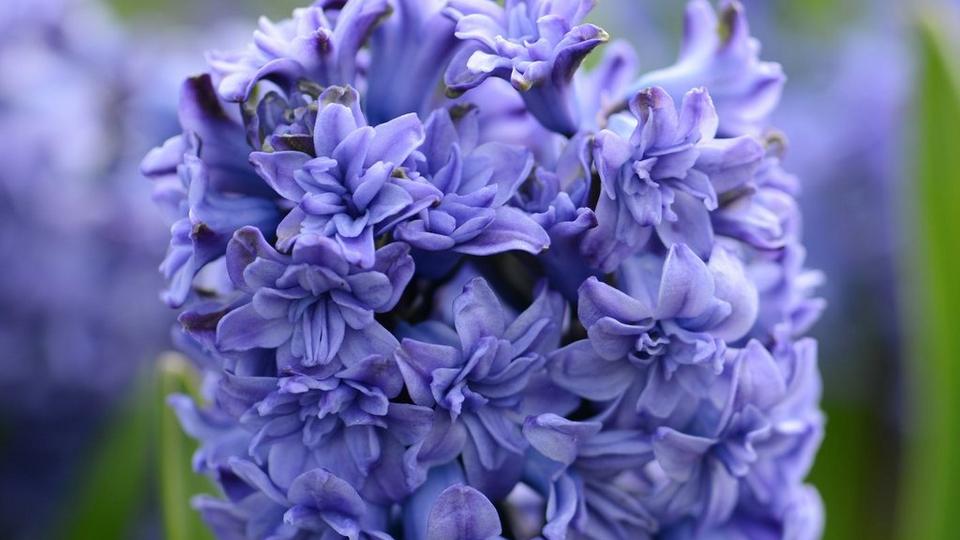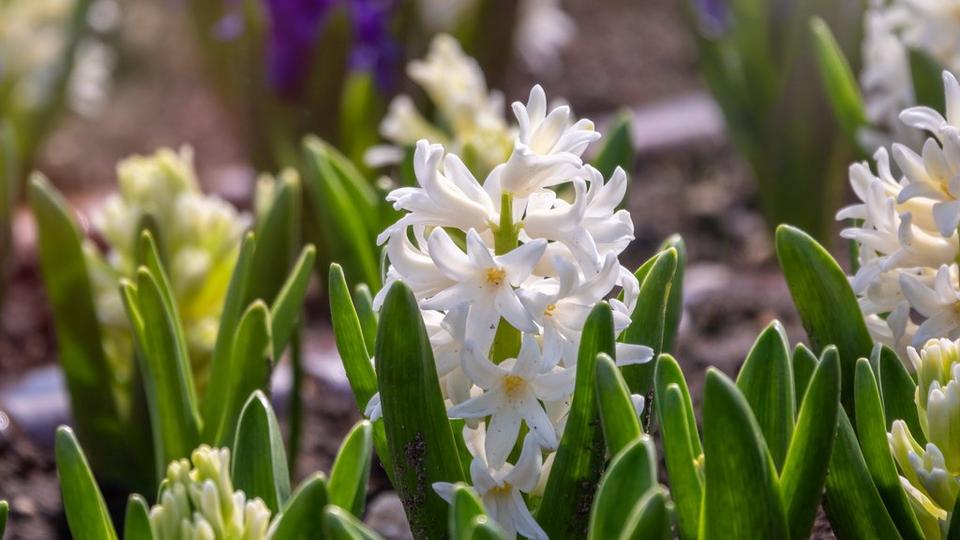Save 25% on all flower subscriptions - Shop here
Hyacinth:EverythingYou Needto Know
If you’re looking to inject some spring vibes into your home, then you must get yourself some fantastic hyacinths.
Hyacinth plants, which are distantly related to the Asparagus family, have it all. Growing from bulbs they have a single stalk with a cluster of around 30 tiny, star-shaped flowers on top - the perfect choice to brighten your home.
However, their attractive looks are not the only reason for getting these spring flowers in your home. They also give off a strong fragrance that smells amazing, the perfect way to chase away the winter months!
This guide will look at the stunning hyacinth flower, the different varieties available and the best time to give some hyacinths as a present.
Hyacinth Flower Varieties
Originally native to the Eastern Mediterranean, hyacinth’s were first introduced to Europe during the 16th century and they have been popular ever since. This is especially true in the Netherlands where, during the 18th century, they bred more than 2,000 varieties. In fact, even though we think of the Netherlands as the home of tulips, they also are some of the biggest producers of hyacinth bulbs. Thanks to all their hard work, there is a huge choice of blooms available.
The most common colours available are white, pink and blue. However, more varieties are appearing and you can choose anything from single or double flowering types in red, orange, yellow and even purple.
When you think of hyacinths, you’ll probably start think of the traditional blue, so this is the first bloom on our list. The Delft Blue – again a nod to the Netherlands - features a tightly packed head of bell flowers in the most gorgeous porcelain blue colour. They also smell amazing with a lovely, sweet perfume.
For something a little bit different, you might want to think about the hyacinth Blue Tango. Double flowering hyacinths are rather unusual and you will see that this plant features the usual star shaped flowers but in two layers. This gives the blooms a frilly appearance and, with its soft blue colouring, makes this a romantic choice to display in your home.




If you’re looking for a hyacinth in pink, then you would have to choose the Amethyst variety. With its dark green leaves and pinkish star-shaped flowers, this choice provides the perfect pop of colour in your home.
For the simplest look, why not try hyacinth Carnegie. This is possibly the whitest of all the hyacinths and features a densely packed head of snow-like blooms. Or for something with dramatic appeal, you must look at the Woodstock which grows distinctive purple blooms that smell fantastic.
Love the look of the hyacinth but want something a little bit smaller? Then look to the Grape Hyacinth, otherwise known as Muscari. More common in plant form rather than a cut flower, Muscari only grow to about 20cm tall and each flower head looks like a bundle of beads all tied together (as their name suggests they almost look like a bunch of grapes). Bees also love them and, if you can, grow some outside in a container to help these important pollinators.
Hyacinth Meaning
A lot of flowers can trace their origins back to Greek mythology and the hyacinth is no different. The story goes that the sun god, Apollo, and the god of the west wind, Zephyrus, became fascinated with a handsome boy called Hyacinthus. They would fight for his affections and one day, when Apollo was teaching the boy how to throw a discus, Zephyrus became so jealous he sent his wind in their direction. The gust sent the discus flying, striking Hyacinthus and killing him instantly. A flower grew from where his blood lay and on noticing it Apollo decided to name the bloom after him.
Hyacinth Care
Hyacinths are really easy to look after and their flowers will last a long time (compared to other bulbs). Hyacinths come in bulbs and thrive in a cool, bright spot - somewhere near a window is ideal but remember to turn the container every day to stop the blooms leaning towards the light. Water the plant whenever it needs it. You can check this by pushing your finger into the soil to see if it feels dry. Just don’t overwater or it will rot the bulbs.
One problem you might find with your hyacinths is from the flower stems drooping. Not the ideal look! To stop this happening, first make sure the plant isn’t sitting close to heat or the soil isn’t too wet. If everything is good, then the problem may be the heaviness of the flower head. In this case you’ll need to give it a helping hand by staking up their heads. Carefully place a stick into the container (don’t go through the bulb) and tie some soft string around the bloom and the stake. Or if they are ready, cut the flower stem and place them in a vase with some fresh water so they can add some seasonal sunshine to any room.
What To Do With Hyacinths After Flowering?
After the hyacinth has finished blooming a lot of people tend to throw them away, which is a bit of a shame. So, what should you do with hyacinth bulbs after flowering?
As a bulb, you can easily plant them outside either straight into your garden or in a container and enjoy them flowering again next spring. Once the flowers on the house plant have died and the leaves turned brown, cut everything back so that only the bulb and the roots remain. It may look harsh, but it allows the bulb to put all its energy into producing new growth. Now store them in a cool, dark place until autumn.
When you’re ready to pop them outside, place into the ground (pointy side up) going about 10cm deep and about 7cm apart (you can go a bit closer if growing in a container). Now ignore and when spring arrives you should see them popping up. Just remember these bulbs have a limited lifespan and after three or four years they may not flower anymore.
A note of caution, the bulbs are poisonous, and you should probably wear gloves when handling them. Make sure you also keep them out of the way of pets – you don’t want your dog mistaking them for a ball to play with!
Add some spring joy to your home with our colourful range of flowering house plants.
